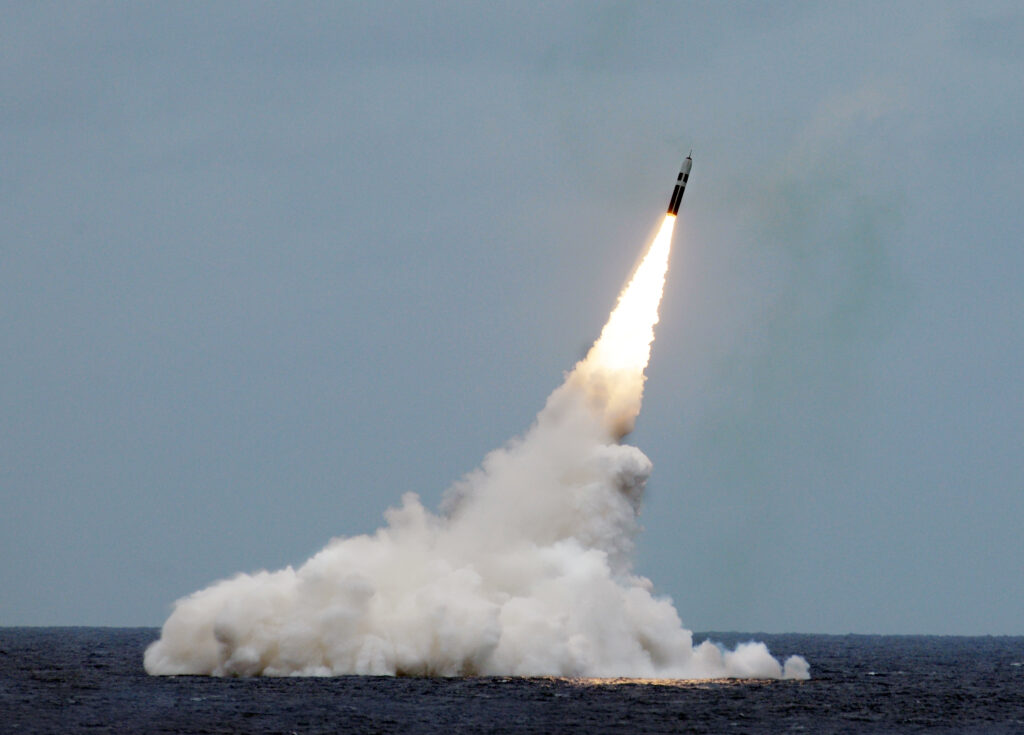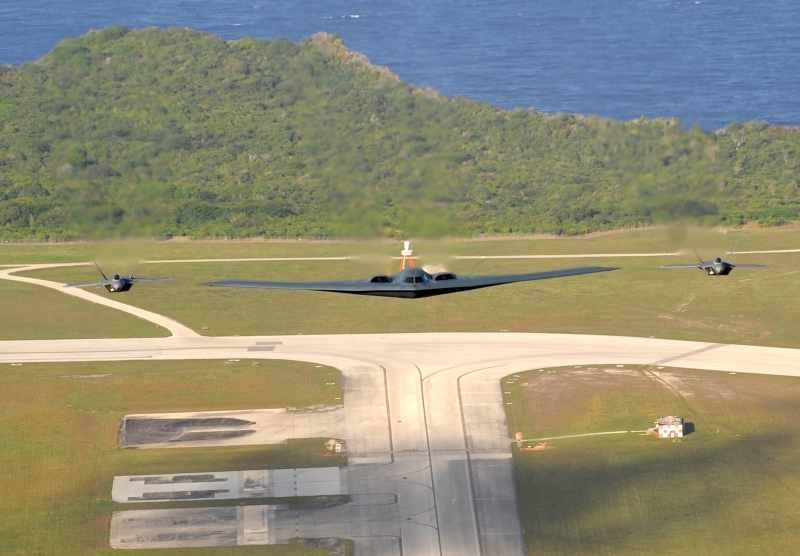
Navy test of a Trident Submarine-Launched Ballistic Missile (SLBM)
The Defense Department’s recent announcement that it has deployed the W76-2 “low yield” nuclear warhead on some American ballistic missile submarines triggered an apoplectic reaction from the arms control community. They took to the op-ed pages to decry what they say is the instability deployment a low-yield SLBM is certain to create. Much of their hand wringing is just plain wrong and defies any strategic logic.
The facts are simple, Russia’s economy is equal to about 5 percent the size of NATO member economies. Russia’s population is also a fraction the size of those same NATO member states. This leaves Russia, which has taken on an aggressive and revisionist bent under Vladimir Putin, seeking ways to prevent NATO and the United States specifically from effectively checking Russian aggression in Eastern Europe.
When President Trump withdrew the United States from the INF Treaty, the United States acknowledged what so many in Washington already knew — the Russians are not trustworthy treaty partners. Remember their violations of the Chemical Weapons Convention and the Convention on Biological and Toxic Weapons. It is also believed that the Russians also engage in illicit nuclear weapons experiments.
Fielding the W76-2 is designed to close a capability gap that threatened to give Vladimir Putin an opportunity to back the United States into a corner where capitulation or full-scale nuclear war would be a president’s only options.
While the arms control community argues that NATO fighter aircraft already field the variable-yield B-61 nuclear weapon, it is clear to NATO member states that these are political weapons and are not a credible deterrent for a number of tactical and technical reasons. A low-yield submarine launched ballistic missile provides the United States with an independent credible capability the Russians actually fear.
Why is this a good thing? Because it gives the Russians pause and complicates any attempts they may take to change the current status quo in Europe.

Two F-22s and a B-2 bomber deployed to Andersen Air Force Base, Guam marked the first time the key strategic stealth platforms in the Air Force inventory deployed together outside the continental United States.
Nuclear Weapons and Deterrence
As former Strategic Command leader Adm. Richard Mies’ graph of wartime fatalities so elegantly shows, a world with nuclear weapons is a much safer place than one without. Maintaining credible deterrence is central to ensuring that graph does not see a dramatic spike in conflict related deaths.
Let us not forget that nuclear weapons not only constrain conflicts between great powers, but they also constrain conflicts between the allies and friends of great powers. Allowing a capability gap for the Russians to exploit will only lead them to act in aggressive ways using proxies, as they have in eastern Ukraine, or to engage in other creative forms of warfare.
I do not understand why the arms control community is so focused on preventing the United States from fielding capabilities that have a 70-year track record of preventing or constraining conflict because of a hypothetical fear that an American president might start a nuclear war because of “miscalculation.” The evidence simply does not support this fear. Redundant safety protocols work.
Arms control advocates could save the lives of innocent people by directing their efforts toward the adoption of an American foreign policy of “restraint” and a military built to defend the nation, rather than one built to export war. Attacking the deployment of the W76-2 is the wrong fight if the concern is saving innocent lives and preventing war.
While I can appreciate the arms control community’s distrust of political and military leaders and their belief that those in the nuclear enterprise are human and prone to mistakes, the system is specifically built with this problem in mind. What is more dangerous is allowing the Russians to believe they can defeat the United States by taking advantage of a capability gap. We can never allow that to happen.
Fielding the W76-2 is a good first step to correcting a capability gap, but other new systems such as the Pershing III and GLCM II are still needed.
Adam Lowther, professor of political science at the Army’s School of Advanced Military Studies (SAMS), was founding director of the Air Force’s School of Advanced Nuclear Deterrence Studies. Prior to his career as an Air Force civil servant, Lowther served in the Navy. The views expressed are those of the author alone and do not necessarily reflect those of the US government.
Navy jet trainer fleet operations remain paused after engine mishap
One week after the incident, a Navy spokesperson says the service is continuing to assess the fleet’s ability to safely resume flight.


























